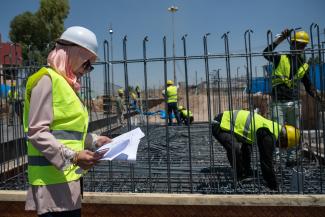USAID is supporting the return of Iraqis to their homes in areas freed from occupation by the so-called Islamic State of Iraq and Syria (ISIS), also known as Da’esh. As of April 2021, 1.2 million Iraqis remain displaced, with many of the areas once occupied by ISIS are still facing immense destruction and lack of basic services. 4.8 million Iraqis have returned home.
In 2015, at the request of the Global Coalition to Defeat ISIS, the United Nations, the Government of Iraq (GOI), the United States, and other international donors created the Funding Facility for Stabilization (FFS). FFS restores essential services in the liberated provinces of Anbar, Diyala, Kirkuk, Ninewa, and Salah al-Din through the rehabilitation of public infrastructure - water, electricity, education, health, and others - damaged or destroyed by ISIS. Today, 28 donors - including the GOI - have contributed over $1.4 billion to FFS. USAID is the largest donor to FFS, contributing over $405 million since 2015.
FFS is implemented by the United Nations Development Program (UNDP) and guided by a Steering Committee consisting of UNDP, contributing donors and the GOI Prime Minister’s Office. The Steering Committee approves locations and helps prioritize activities based on need and specific requirements for location and activity set by individual donors.
USAID assists in promoting stability in Iraq through projects that restore crucial infrastructure and services, such as water, electricity, and sewage. USAID also provides funding to rehabilitate destroyed hospitals, universities, roads, and neighborhoods. USAID has funded activities in Anbar, Ninewa, and Salah al-Din, with a particular focus on the religious and ethnic minority communities in the Ninewa Plain and western Ninewa, the destroyed city of Mosul, and the region of western Anbar, which was one of the areas longest occupied by ISIS.
For more information about USAID's stabilization programming in Iraq, click here.

Claire Thomas
